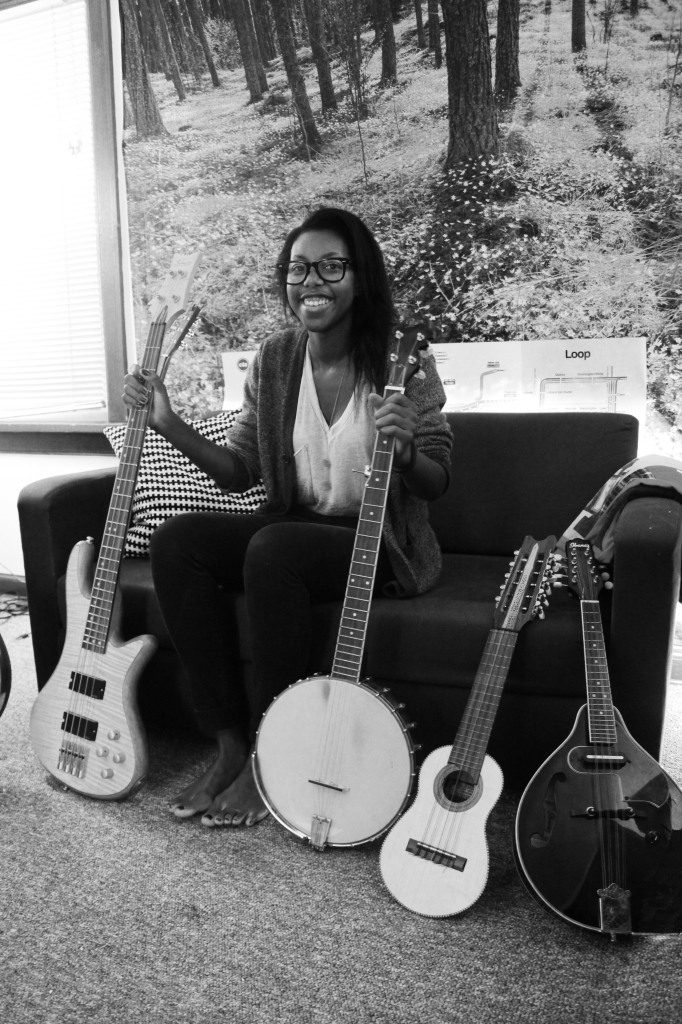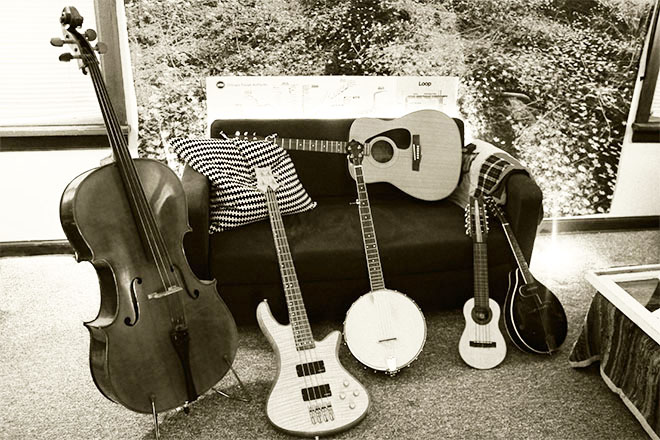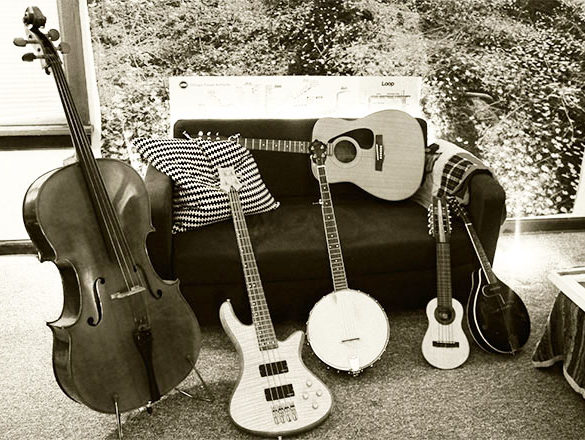Fingers on the strings, Maya Bird-Murphy masters the charango.

A bass guitar, piano, banjo and mandolin sit together by the fireplace in the living room; upstairs rests an acoustic guitar and cello. Before college, senior Maya Bird-Murphy played six instruments. Three years ago she added one more to the collection: the charango.
Bird-Murphy took a music history class her freshman year where the professor introduced her to the charango. Later that year, she went to Mexico for a month where she heard a professional play.
When she came home, one of the first things she did was order a charango online.
Bird-Murphy said she learned to play her new instrument by ear.
“I usually just mess around; the way that I learn how to play an instrument is that I listen to songs that I know and listen to it on my phone and try to play them,” she said.
“My ear is what led me to picking up so many instruments.”
Bird-Murphy learned this skill at 4 years old when she first took piano lessons.
“My piano teacher would scold me because when she showed me how to play something, I would repeat exactly what she did instead of reading the music,” she said.
The Metropolitan Museum of Art said the instrument originated from Bolivia and can be found in Peru and Argentina. The small instrument is similar to a ukulele.
Bird-Murphy’s charango is carved from wood. However, an authentic charango is made from an armadillo shell.
“A lot of people haven’t even heard of it, and it’s very portable,” Bird-Murphy said. “It’s just very unique.”
Majoring in architecture, Bird-Murphy said she has a busy schedule that interferes with how much she plays. She now plays the piano most because there is one located in the architecture building.
But when she does play the charango, Bird-Murphy said she is able to lose herself in a song and relax.
“Sometimes, I get totally lost and I’ll play for hours and not even know it,” she said. “It’s definitely a stress-reliever.”
Click to hear Bird-Murphy play an original song on the charango.




